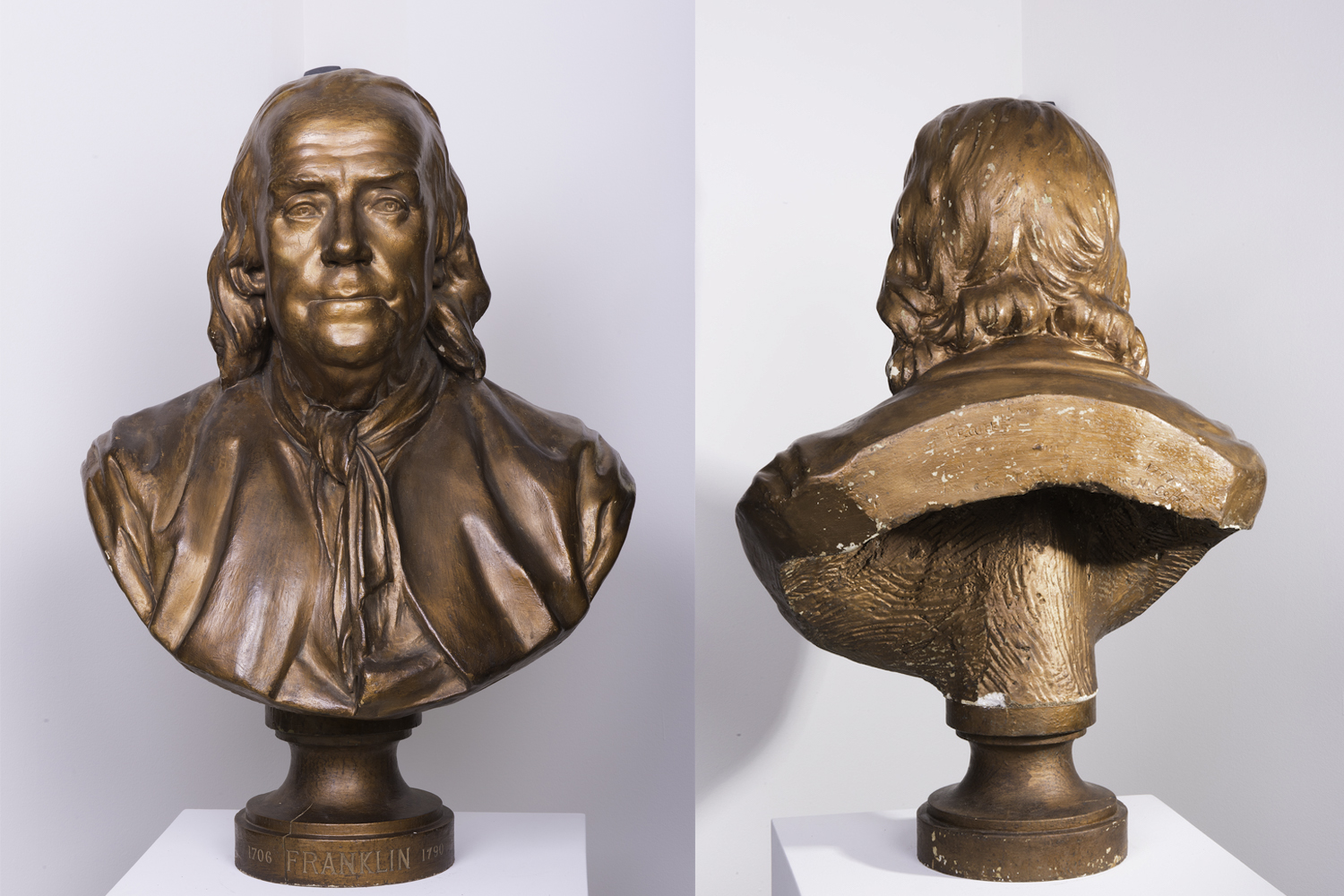Made up of 49 wooden cars filled with gifts, the historic 1949 Merci Train was France’s way of thanking the United States for its aid during World War II. The tokens of appreciation aboard the freight cars included bottles of wine, furniture, clothes, decorations and more. Among the quotidian household goods and ornaments, there was one very rare piece: A bust of Benjamin Franklin that the Founding Father had presented to the French Academy of Sciences in 1785. Up until recently, no details have been available about the Franklin bust’s whereabouts after it boarded the Merci Train. It had been lost in the shuffle of history and time.
That is, until August 2014, when Pamela Ehrlich, an independent researcher, approached the Luther W. Brady Art Gallery with information that they might have an important bust of Dr. Franklin in their collection. A bust of similar description was acquired in 1987 when the George Washington University assumed ownership of the former Benjamin Franklin University. As the merger occurred, Director, University Art Galleries and Chief Curator, Lenore Miller was asked to assess any works of art. That’s when she came upon a plaster bust of Dr. Franklin, painted with bronze paint. Ms. Miller believed that the bust might have some historical significance and made sure it was safely stored as part of GW’s collection in an off-site, secure storage facility.
Ms. Ehrlich had discovered an April 1949 newspaper photograph showing a Jean-Jacques Caffieri bust of Dr. Franklin from the Merci Train being presented to the Benjamin Franklin University. In addition, Ms. Ehrlich found an 1879 French government inventory of art that recorded a unique inscription on the bust Dr. Franklin gave to the French Academy of Sciences––which includes J.-J. Caffieri's signature and the words “L’Academie des Sciences.” If this inscription is on the GWU sculpture it aids in proving it is the Merci Train bust.
Unfortunately, the inscription on the Brady Art Gallery bust has been obscured. But it is a clue uncovered thanks to Ms. Ehrlich, and Museum Studies Professor Mary Coughlin explains that more scientific analysis—including the use of a stereo microscope—could offer additional insight into the piece.
“Historic research, in addition to what has already been done by Ms. Ehlrich, will be key to figuring out more about the journey that led the bust to the GW collection. The combination of provenance and material characterization from scientific analysis can help inform decisions on authenticity and conservation treatment options,” she explained.
The Brady Art Gallery has established a fund for conservation to help support research on and care for the collection—which would include work determining if the GW Franklin bust is the one from 18th-century France. The gallery is also in the process of acquiring a new database system for the collection that would eventually be searchable by the public.
The bust has not been on view since GW’s acquisition, but the Brady Art Gallery placed it in its recent exhibition The Other 90%: Works from the GW Permanent Collection. The show highlighted pieces from the collection that hadn’t been exhibited in more than 10 years.
“The GW Permanent Collection of almost 4,000 objects contains many treasures,” Ms. Miller said. “We look forward to sharing these with the GW community through the Brady Art Gallery’s curated exhibitions.”
If you are interested in supporting our conservation initiatives, please contact the Brady Art Gallery atlutherbradyart gmail [dot] com. For further reading, please see Pamela Ehrlich's article, "The Royal Academy Of Sciences’ Bust Of Benjamin Franklin" in the Summer 2016 issue of Antiques & Fine Art magazine.
gmail [dot] com. For further reading, please see Pamela Ehrlich's article, "The Royal Academy Of Sciences’ Bust Of Benjamin Franklin" in the Summer 2016 issue of Antiques & Fine Art magazine.


